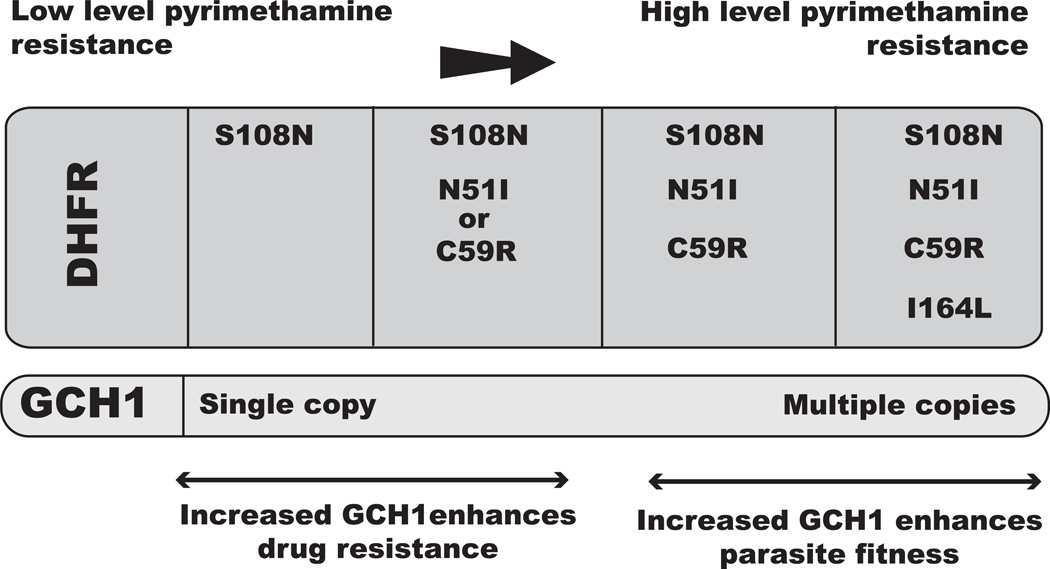Figure 2.
The relationship between GCH1 and DHFR in the evolution of antifolate resistance in P. falciparum. Successive point mutations in dhfr are shown to form the single S108N mutation to the completely resistant quadruple-mutant allele with the I164L mutation. Increasing gch1 copy number is seen in field samples of parasites that have the highly resistant quadruple-mutant allele of dhfr. The proposed role of increased GCH1 was derived from studies using manipulated parasite lines in the laboratory and bacterial models expressing Plasmodium dhfr and gch1. At low-level pyrimethamine resistance, increased GCH1 correlates with a shift to a more resistant parasite, and at higher levels of resistance, increased GCH1 correlates with increased fitness of parasites harboring the quadruple-mutant DHFR in the absence of drug pressure. Most studies that have been done focus on DHFR and pyrimethamine, thus DHPS was not included in this figure.

